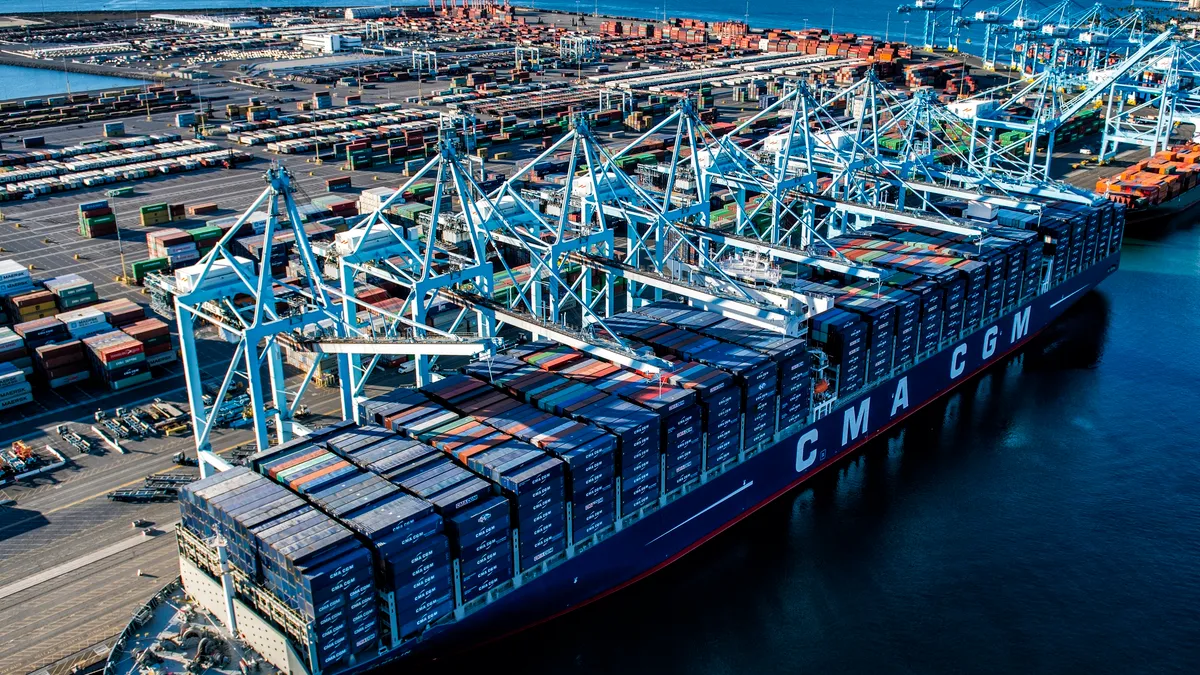Dive Brief:
- CMA CGM's fleet will be operating at full strength by mid-March said CEO Rodolphe Saadé Friday in a statement releasing the company's 2019 earnings results. Production in China is ramping up after weeks of labor shortages and transportation bottlenecks due to the ongoing COVID-19 outbreak, the CEO said.
- Saadé told the Financial Times factories are at 80% production capacity and freight volumes in February were 8% lower than the previous month. The carrier described January volumes as extremely robust in its statement.
- Though factory activity and freight movement is resuming in China, CMA CGM CFO Michel Sirat told Reuters the longer-term structural impact on the industry from COVID-19, an illness in the coronavirus family, could bring down the carrier's 2020 total revenue by 2-3%, or $100 million.
Dive Insight:
Saadé said the carrier's in-house logistics arm Ceva Logistics — formally acquired in 2018 — was a crucial element in servicing customers through February. He described chartering 50 planes to fly auto parts from China to Los Angeles to the Financial Times.
"Thanks to CEVA, we have been able to provide alternative solutions to our customers to avoid disruptions to their supply chains," said Saade's statement.
Saadé's assessment of 8% volume loss in February very nearly matched Alphaliner's estimate that 8.8% of container fleets were inactive in February. By the first week of March, port calls in China were returning to normal levels, suggesting fleet activity will soon follow.
Maersk CEO Søren Skou said in late February he expects a rush of volume upon return to normal function that may make up for February's losses as long as COVID-19 cases in China do not begin to grow again. In releasing his company's earnings Feb. 20, Skou also underlined the importance of logistics assets during the crisis.
Though Ceva helped shippers adjust to disruptions last month, it is also part of the reason the carrier is not in ideal financial shape to weather the coronavirus storm.
In 2019, CMA CGM posted a net loss of $229 million (after posting $34 million in profit the previous year) due largely to the acquisition and the scale of investment required to return Ceva to profitable operations.













